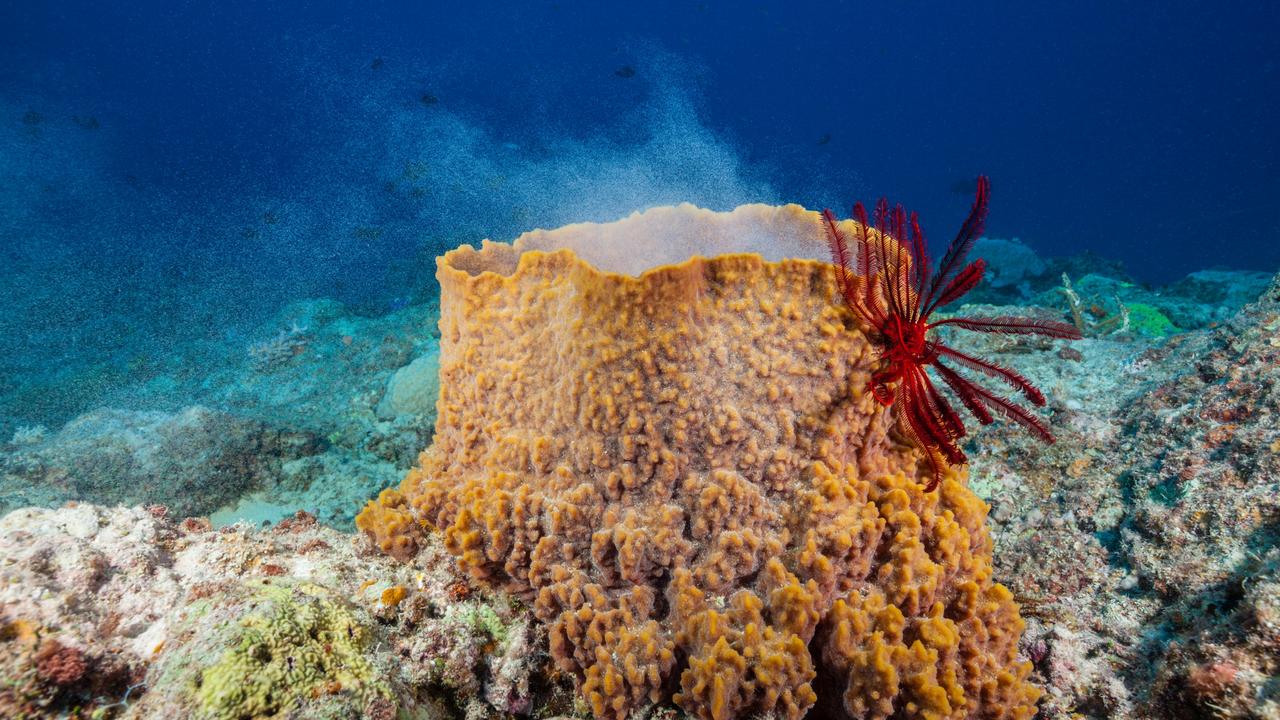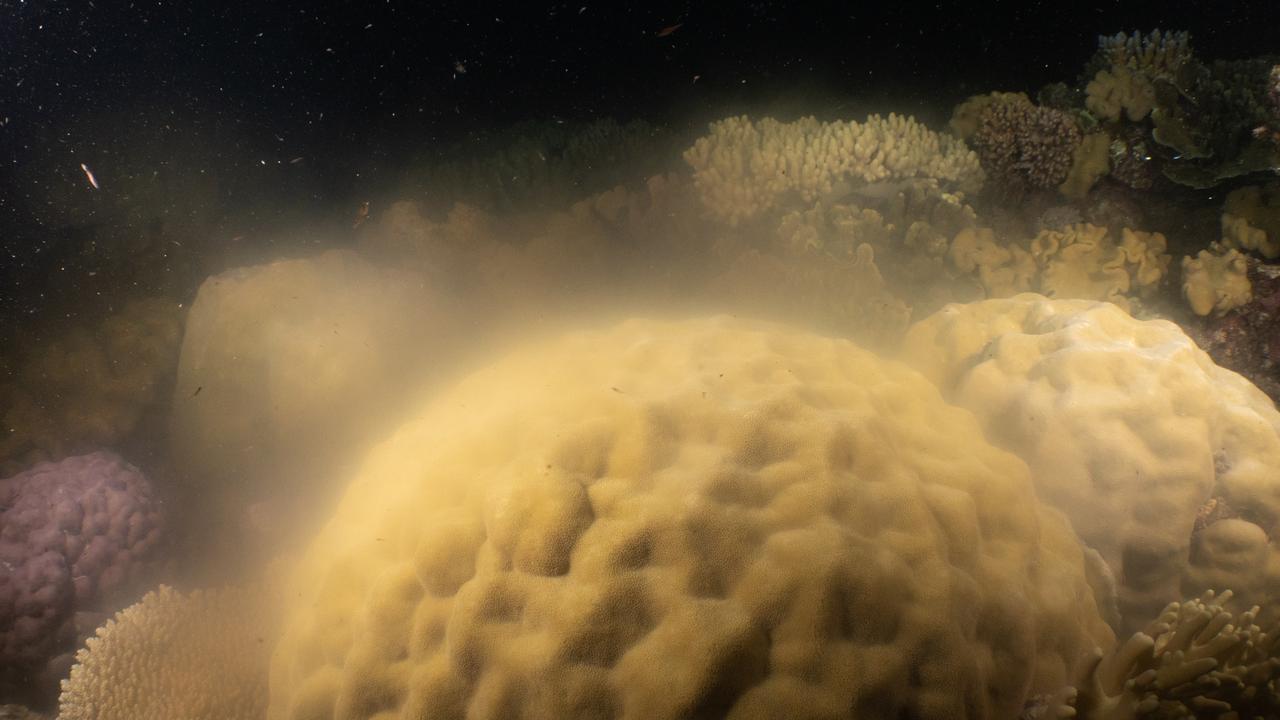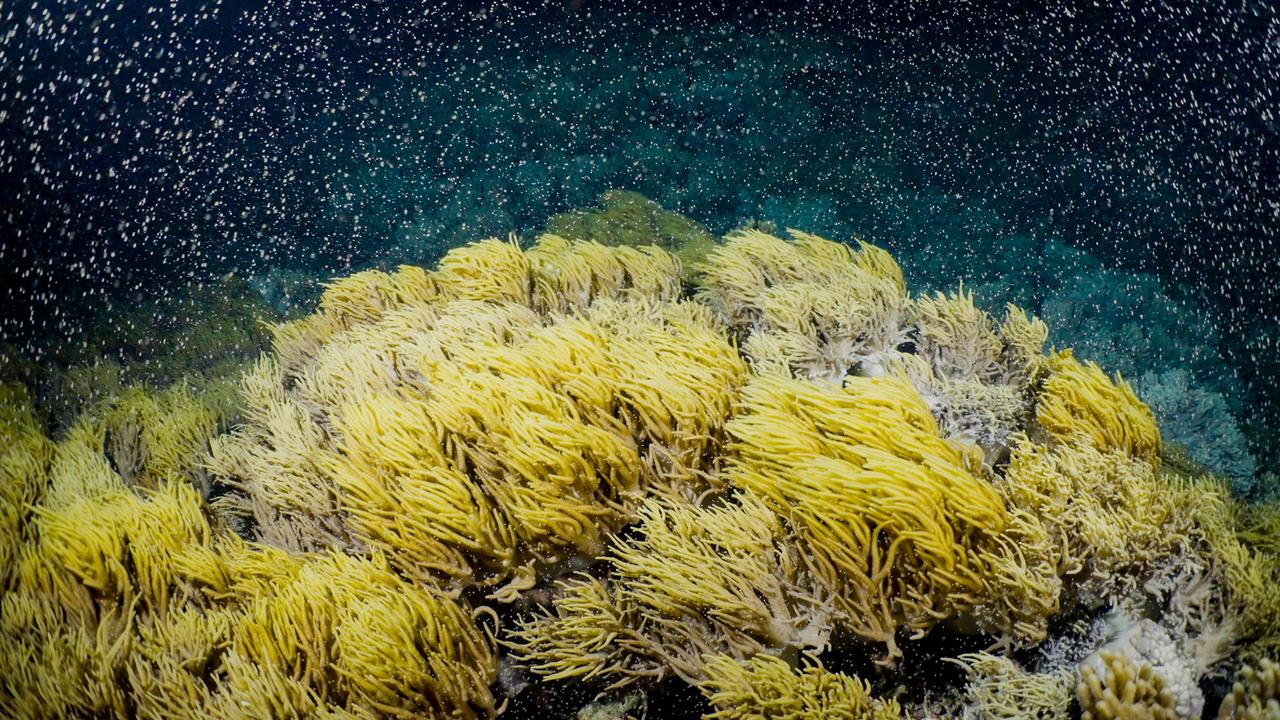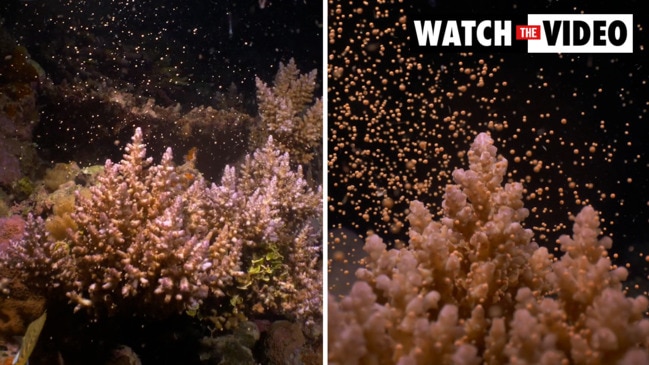What to expect when full moon triggers mass coral reef spawn
As the reef gets ready for its yearly ‘date night’, scientists say it’s not just coral that will be busy during November’s spawning season. Here’s what to expect and why it’s critical for our oceans

READING LEVEL: GREEN
The world’s largest date night is right around the corner as the reef enters prime November spawning* time.
But experts have found corals won’t be the only ones romancing under the full moon.
Great Barrier Reef Marine Park Authority (GBRMPA) chief scientist Roger Beeden said researchers were only now discovering an array of marine species that used a “safety in numbers” approach during the annual spawn.
“We’ve known about mass coral spawning for more than 40 years, but we’re only now discovering all these other marine species are taking advantage of the coral spawning cover,” Dr Beeden said.
“Clams, sponges, sea cucumbers and starfish, among others, are using the protection of this unique breeding opportunity to release their own spawn and create their next generations.”
Mass coral spawning occurs after a full moon once waters have warmed up enough for coral sperm and egg maturity*.

According to the GBRMPA website, during a mass spawning event, entire colonies of coral release eggs and sperm at the same time in a “snow storm-like phenomena.”
“Once the sperm fertilises the eggs, they develop into tiny, free-swimming larvae* called planulae. These larvae eventually settle on the reef substrate*, growing into new coral colonies that can help repopulate reefs,” the site states.
Spawning is affected by the length of day, the tide, and salinity levels*.
The mass event only happens at night, and once started, it can run from a few days to a week as different coral species take turns spawning on certain days to prevent crossbreeding*.
Inshore reefs* can spawn as early as October. Townsville reefs often spawn in November and some offshore reefs* wait until December.

The full moon this year occurred on October 17, and will rise on November 16 and December 15.
On the October full moon, spawnings were recorded near Magnetic Island and Fitzroy Island (Cairns).
Researchers have predicted the “big event” for offshore reefs this year will be on the November moon.
Dr Beeden said the coral spawn was a critical time for the ocean because it was the only time corals actually reproduced.
“These spawning corals are genetic gold* for reef resilience. Corals that have survived coral bleaching events may pass on more heat-tolerant genes* to the next generation,” he said.

November also marked the start of stinger season in northern Australia with venomous* box jellyfish and their kind coming into the coast to spawn themselves.
And don’t make the mistake of thinking the season of love stops at the beach. Crocodiles have also been forecast to be on the move, searching for mates and freshwater nest sites as they head into their breeding season.
WATCH THE VIDEO

POLL
GLOSSARY
- spawning: the release or deposit of eggs in the process of reproduction
- egg maturity: when eggs have developed enough that they are ready to be fertilised in the process of reproduction
- larvae: the immature form of an organism
- reef substrate: the layer of rock or sand that the coral grows from in a reef
- salinity levels: the level of salt in the water
- crossbreeding: when different species of coral breed together to form a new species
- inshore reefs: reefs near the coast
- offshore reefs: reefs on the outer edge of the continental shelf
- genetic gold: valuable for producing genetically strong coral
- heat-tolerant genes: genes that can withstand warmer waters
- venomous: poisonous
EXTRA READING
Fake reef reels in catch of the day
‘Alien poo’ keeps beaches closed
Freaky NT monster of the deep
QUICK QUIZ
1. What are two other species taking advantage of mass coral spawning for their own reproduction?
2. What type of moon triggers a mass spawning event?
3. In what way is coral spawning critical for the future of the oceans?
4. Why does November mark the start of the stinger season in northern Australia?
5. What are crocodiles forecast to be doing in November?
LISTEN TO THIS STORY
CLASSROOM ACTIVITIES
1. Setting description
Imagine that you are an author writing a story about a magical underwater adventure. The adventure begins during a mass coral spawning event. Write a narrative introduction where you describe this setting in vivid detail.
Time: allow 20 minutes to complete this activity
Curriculum Links: English; Science
2. Extension
Make a list of facts that scientists have been able to conclude about mass coral spawning events through their research.
Formulate three questions that you think scientists should try to research next.
Time: allow 20 minutes to complete this activity
Curriculum Links: English; Science
VCOP ACTIVITY
I spy nouns
Nouns are places, names (of people and objects), and time (months or days of the week).
How many nouns can you find in the article?
Can you sort them into places, names and time?
Pick three nouns and add an adjective (describing word) to the nouns.


